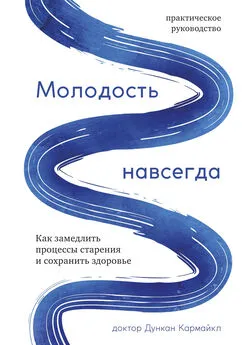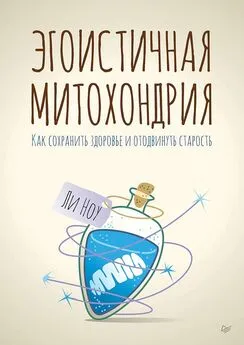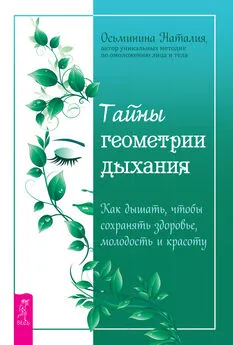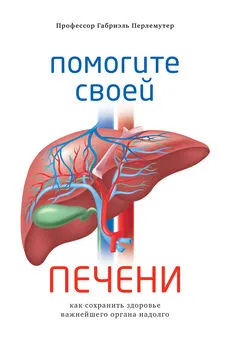Дункан Кармайкл - Молодость навсегда. Как замедлить процессы старения и сохранить здоровье
- Название:Молодость навсегда. Как замедлить процессы старения и сохранить здоровье
- Автор:
- Жанр:
- Издательство:неизвестно
- Год:2018
- ISBN:978-5-389-18963-8
- Рейтинг:
- Избранное:Добавить в избранное
-
Отзывы:
-
Ваша оценка:
Дункан Кармайкл - Молодость навсегда. Как замедлить процессы старения и сохранить здоровье краткое содержание
«Современный мир дает возможность как поддерживать здоровье в пре-красном состоянии, так и еще в молодом возрасте „заработать“ тяжелые хронические заболевания. Очевидно, что в большинстве случаев наше здоровье в наших руках. Вопрос в том, как определить, что помогает, а что вредит? Все так быстро меняется во всех областях медицины, что вчерашнее лекарство завтра может быть признано вредным (и это не учитывая аферистов в белых халатах, пытающихся впарить шарлатанские средства от всех болезней). Поиск надежной информации в эпоху интернета становится нелегкой задачей. Моя цель – составить для вас полезную дорожную карту». (Дункан Кармайкл)
В формате PDF A4 сохранён издательский дизайн.
Молодость навсегда. Как замедлить процессы старения и сохранить здоровье - читать онлайн бесплатно ознакомительный отрывок
Интервал:
Закладка:
509
Yang S. et al. ‘Estrogen increases eNOS and NOx release in human coronary artery endothelium.’ J Cardiovasc Pharmacol (2000): 36: 242–247.
510
‘The effects of estrogen or estrogen/progestin regimens on heart attack risk factors in post menopausal women. The Postmenopausal oestrogen Progesterone trial (PEPI trial).’ JAMA (1995): 273: 199–208. URL: https://www.ncbi.nlm.nih.gov/pubmed/7807658.
511
Golden, S. H. et al. ‘Endogenous postmenopausal hormones and carotid atherosclero-sis: a case-control study of the atherosclerosis risk in communities cohort.’ Am J Epidemiol (2002): 155: 437–445.
512
Miller, K. K. et al. ‘Low-dose transdermal testosterone augmentation therapy improves depression severity in women.’ CNS Spectr (2009): 14: 688–694.
513
Goldstat, R. et al. ‘Transdermal testosterone therapy improves well-being, mood and sexual function in premenopausal women.’ Menopause (2003): 10: 390–398.
514
Miller, K. K. et al. ‘Androgen deficiency: association with increased anxiety and depres-sion symptom severity in anorexia nervosa.’ J Clin Psychiatry (2007): 68: 959–965.
515
Hermans, E. J. et al. ‘A single administration of testosterone reduces fear-potentiated startle in humans.’ J Biol Psychiatry (2006): 59: 872–874.
516
Moffat, S. D. et al. ‘Free testosterone and risk for Alzheimer’s disease in older men.’ Neurology (2004): 62: 188–193.
517
Wisniewski, A. B. et al. ‘Evaluation of high dose oestrogen and high dose oestrogen plus methyl-testosterone treatment on cognitive task performance in postmenopausal women.’ Horm Res (2002): 58: 150–155.
518
Naing, S. et al. ‘Hypogonadism in chronic obstructive pulmonary disease.’ Curr Opin Pulm Med (2012): 18: 112–117.
519
Booji, A. et al. ‘Androgens as adjuvant treatment in postmenopausal female patients with rheumatoid arthritis.’ Ann Rheum Dis (1996): 55: 811–815.
520
Naoko, K. et al. ‘Testosterone suppresses anti-DNA antibody production in peripheral blood mononuclear cells from patients with systemic lupus erythematosus.’ Arthritis Rheum (1997): 40: 1703–1711.
521
Pope, Jr, H. G., et al. ‘Effects of supraphysiologic doses of testosterone on mood and aggression in normal men: a randomized controlled trial.’ Arch Gen Psychiatry (2000): 57 (2): 133–140.
522
Santora, L. J. et al. ‘Coronary calcification in bodybuilders using anabolic steroids.’ Prev Cardiol (2006): 9 (4): 198–201.
523
Copley, L. M. et al. ‘Consequences of use of anabolic androgenic steroids.’ Pediatr Clin North Am (2007): 54 (4): 677–690.
524
Sample, B. R. ‘Psychiatric effects and psychoactive substance use in anabolic-andro-genic steroid users.’ Clin J Sport Med (1996): 5 (1): 25–31.
525
Yofkova, I. et al. ‘A decreasing CD 4+/CD 8+ ratio after one month of treatment with Stanozolol in postmenopausal women.’ Steroids (1995): 60: 430–433.
526
Montgomery-Massingberd, H. ‘The Duchess’. The Spectator Archive, (29 September 1978), p. 22.
527
‘Physicians to Stop Injecting Silicone for Cosmetic Treatment of Wrinkles’. Food and Drug Administration press release (1992).
528
Kontis, T. C. et al. ‘The History of Injectable Facial Fillers.’ Facial Plast Surg (2009): 25: 67–72.
529
Greco, R. M. et al. ‘Hyaluronic Acid Stimulates Human Fibroblast Proliferation Within a Collagen Matrix.’ J Cell Physiol (1998): 177: 465–473.
530
Ke, C. et al. ‘Antioxidant Activity of Low Molecular Weight Hyaluronic Acid.’ Food Chem Toxicol (2011): 49: 2670–2675.
531
Chen, W. Y. and Abatangelo, G. ‘Functions of Hyaluronan in Wound Repair.’ Wound Repair Regen (1999): 7 (2): 79–89.
532
Cancer Research UK. URL: http://www.cancerresearchuk.org/health-profes-sional/cancer-statistics/statistics-by-cancer-type/skin-cancer#heading-Zero.
533
Armstrong, B. K. et al. ‘Case-control Study of Sun Exposure and Squamous Cell Carcinoma of the Skin.’ Int J Cancer (1998): 77: 347–353.
534
‘Global, Regional and National Life Expectancy, All-cause Mortality, and Cause-specific Mortality for 249 Causes of Death, 1980–2015: A Systematic Analysis for the Global Burden of Disease Study 2015.’ The Lancet (2016): 388: 1459–1544.
535
Johnston, H. ‘Reduction of Stratospheric Ozone by Nitrogen Oxide Catalysts from Supersonic Transport Exhaust.’ Science (6 August 1971): 173 (3996): 517–522. Molina, M. J., Rowland, F. S. ‘Stratospheric Sink for Chlorofluoromethanes: Chlorine Atom-catalysed Destruction of Ozone.’ Nature (1974): 249: 810–812.
536
‘Ozone and UV: Where Are We Now.’ Skin Cancer Foundation: 27 July 2009: http://www.skincancer.org/prevention/uva-and-uvb/ozone.
537
Godar, D. et al. ‘Cutaneous Malignant Melanoma Incidences Analyzed Worldwide by Sex, Age and Skin Type Over Personal Ultraviolet-B Dose Shows No Role for Sunburn but Implies One for Vitamin D 3.’ Dermato-Endocrinology (2017): Vol. 9, № 1: http://dx.doi.org/10.1080/19381980.2016.1267077.
538
Brash, D. et al. ‘A Role for Sunlight in Skin Cancer: UV–Induced P-53 Mutations in Squamous Cell Carcinoma.’ Proc Natl Acad Sci USA (1991): 88: 10124–10128.
539
Brash, D. E. ‘UV Signature Mutations.’ Photochem Photo-Biol: (2015): 91: 15–26: PMID:25354245: http://dx.doi.org/ 10.1111/php.12377.
540
Cooke, M. S. et al. ‘Oxidative DNA Damage: Mechanisms, Mutation and Disease.’ FASEB J (2003): 17 (10): 1195–1214: PMID:12832285: http://dx.doi.org/10.1096/fj.02–0752rev.
541
Lucas, A. et al. ‘Increased UVA Exposures and Decreased Cutaneous Vitamin D 3 Levels may be Responsible for the Increasing Incidence of Melanoma.’ Medical Hypotheses (2009): 72: 434–443.
542
Nair, R. et al. ‘Vitamin D: the ‘Sunshine’ Vitamin.’ J Pharmacol Pharmacother (2012): 3: 118–26.
543
Von Essen, M. R. et al. ‘Vitamin D Controls T-cell Antigen Receptor Signaling and Activation of Human T-cells.’ Nat Immunol (2010): 11: 344–349: PMID:20208539: http://dx.doi.org/10.1038/ni.1851.
544
Alshishtawy, M. M. ‘Vitamin D Deficiency. A Clandestine Endemic Disease is Veiled No More.’ SQUMJ (2012): 140–152.
545
Lucas, A. et al. ‘Increased UVA Exposures and Decreased Cutaneous Vitamin D 3 Levels may be Responsible for the Increasing Incidence of Melanoma.’ Medical Hypotheses (2009): 72: 434–443.
546
Daya-Grosjean, L. ‘Xeroderma Pigmentosum and Skin Cancer.’ Adv Exp Med Biol (2008): 637: 19–27.
547
Leibeling, D. et al. ‘Nucleotide Excision Repair and Cancer.’ J Mol Histol (2006): 37 (5–7): 225–238.
548
Weber, S. ‘Light-Driven Enzymatic Catalysis of DNA Repair: A Review of Recent Biophysical Studies on Photolyase.’ BBA (2005): Vol. 1707: 1–23.
549
Milani, M. et al. ‘Ei cacy of a Photolyase-Based Device in the Treatment of Cancerization Field in Patients with Actinic Keratosis and Non-Melanoma Skin Cancer.’ G Ital Dermatol Venereol (2013): 148: 693–698.
550
Rudolph, C. M. et al. ‘Squamous Epithelial Carcinoma in Erythema Ab Igne.’ Hautarzt (2000): 51: 260–263.
551
Kligman, L. ‘Intensification of Ultraviolet-Induced Dermal Damage by Infrared Radiation.’ Arch Dermatol Res (1982): 272: 229–238.
552
Schroeder, P. et al. ‘Infrared Radiation-Induced Matrix Metalloproteinase in Human Skin: Implications for Protection.’ J Invest Dermatol (2008): 2491–2497. https://www.ncbi.nlm.nih.gov/pubmed/18449210.
553
Vierkotter, A. et al. ‘MMP-1 and 3-Promoter Variants are Indicative of a Common Susceptibility for Skin and Lung Aging: Results from a Cohort of Elderly Women (SALIA).’ J Invest Dermatol (2015): 135: 1268–1274.
554
Farmer, P. B. et al. ‘Molecular Epidemiology Studies of Environmental Pollutants. Effects of Polycyclic Aromatic Hydrocarbons (PAHs) in Environmental Pollution on Exogenous and Oxidative DNA Damage.’ Mutat Res (2003): 544: 397–402.
555
Huls, A. et al. ‘Trai c-Related Air Pollution Contributes to Development of Facial Lentigines: Further Epidemiological Evidence from Caucasians and Asians.’ J of Invest Dermatol (2016): 136: 1053–1056.
556
Manning, W. J. et al. ‘Ozone and Levels in European and USA Cities are Increasing More Than at Rural Sites, While Peak Values are Decreasing.’ Environ Pollut (2014): 192: 295–299.
557
Valacchi, G. et al. ‘Vitamin C Compound Mixtures Prevent Ozone-Induced Oxidative Damage in Human Keratinocytes as Initial Assessment of Pollution Protection.’ PLoS ONE (2015).
558
Lai, D. et al. ‘Localization of HPV-18 E 2 at Mitochondrial Membranes Induces ROS Release and Modulates Host Cell Metabolism.’ PLoS One (2013): 8 (9): e75625. eCollection 2013: PMID:24086592: http://dx.doi.org/10.1371/journal.pone.0075625.
559
Prabhu, S. R. and Wilson, D. ‘Evidence of Epstein-Barr Virus Associated with Head and Neck Cancers: A Review.’ J Can Dent Assoc (2016): 82: g2: http://www.jcda.ca/g2.
560
Parkin, D. M. ‘The Global Health Burden of Infection-associated Cancers in the Year 2002.’ Int J Cancer (2006): 118 (12): 3030–3044.
561
Dreau, D. et al. ‘Human Papillomavirus in Melanoma Biopsy Specimens and Its Relation to Melanoma Progression.’ Ann Surg (2000): 231 (5): 664–671.
562
Godar, D. et al. ‘Cutaneous Malignant Melanoma Incidences Analyzed Worldwide by Sex, Age and Skin Type Over Personal Ultraviolet-B Dose Shows No Role for Sunburn but Implies One for Vitamin D 3.’ Dermato-Endocrinology (2017): Vol. 9, № 1: http://dx.doi.org/10.1080/19381980.2016.1267077.
563
Wertz, P. W. ‘Lipids and Barrier Function of the Skin.’ Acta Derm Venereol (2000): 208: 7–11.
564
Jackson, M. J. et al. ‘UVR-Induced Oxidative Stress in Human Skin in vivo: Efects of Oral Vitamin C Supplementation.’ Free Radic Biol Med (2002): 33: 1355–1362.
565
Telang, P. S. ‘Vitamin C in Dermatology.’ Indian Dermatol Online (2013): 4: 143–146.
566
Placzek, M. et al. ‘Ultraviolet B-Induced DNA Damage in Human Epidermis is Modified by the Antioxidants Ascorbic Acid and D-alpha-tocopherol.’ J Invest Dermatol (2005): 124: 304–307.
Читать дальшеИнтервал:
Закладка:










